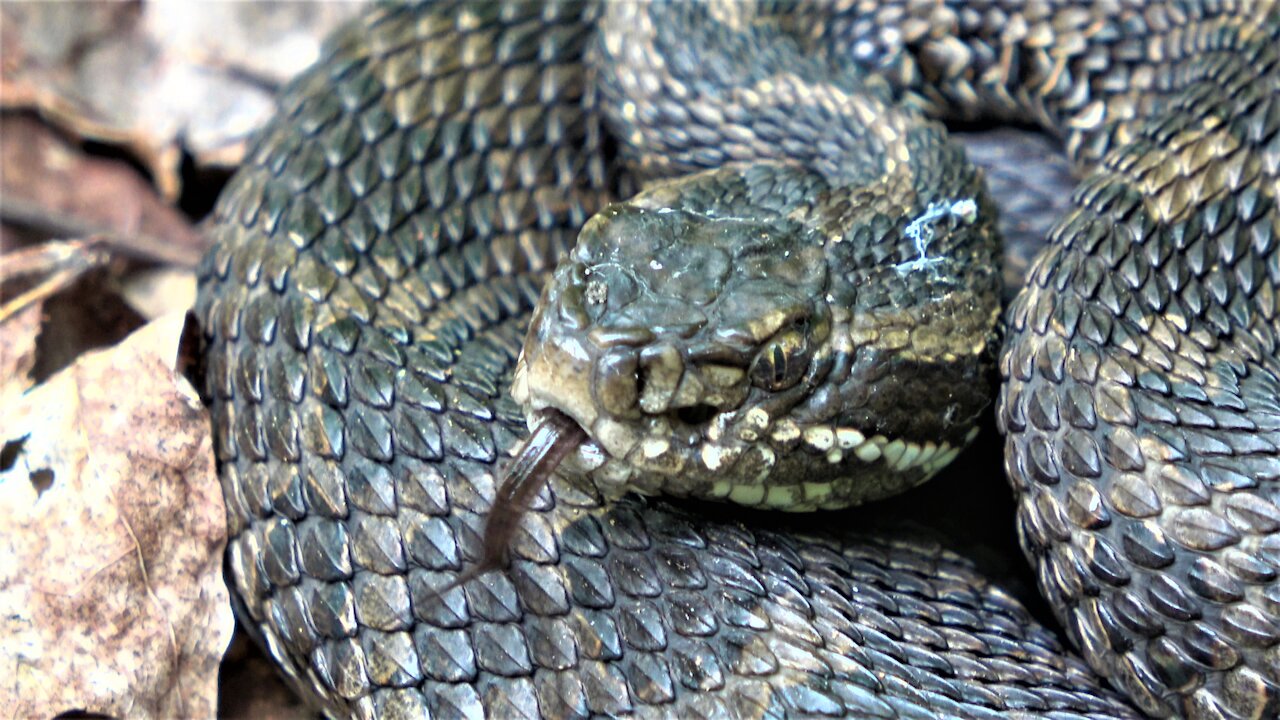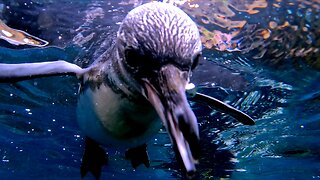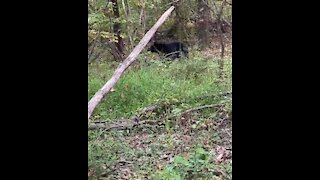Premium Only Content

Family & dogs encounter large rattlesnake coiled on trail
The Massassauga Rattlesnake is found throughout the midwestern United States and parts of Canada. It is a pit viper, and like all pit vipers, it is venomous, capable of killing its prey by striking and injecting poison into the blood stream of their food. They have hollow fangs which penetrate the skin and inject venom like a hypodermic needle. The venom digests tissue, interferes with blood clotting, and causes internal bleeding. There have been rare cases of human death from a bite, and almost always when medical treatment was not sought. For this reason, they are widely feared by people and they are commonly killed.
But, despite the perceived threat, it is not an aggressive creature and it rarely poses a danger to humans. A bite can cause serious illness, and only occasionally, death of a human. But these snakes do not eat people and they have no desire to harm a human. They will strike if startled or harassed, and their defensive behaviour can be mistaken as aggression. They are shy animals and walking through their habitat will rarely result in an encounter. Long pants, proper footwear and a keen eye are usually all that are needed to prevent a misunderstanding. Additionally, rattlesnakes have a callous on their tail that creates an audible sound when they are alarmed. The rattle produces a buzz that closely resembles an angry bumblebee in dry leaves. This is meant as a warning to give the snake space.
Massassauga Rattlesnakes are listed as threatened or endangered species in most areas of North America and it is generally illegal to kill one. In contrast with the widespread myths that they are dangerous killers, a bite is almost always survivable. In many cases, the snake will not even inject venom. Dry bites are very common, and completely harmless.
Rattlesnakes are essential for keeping rodent populations in check. With snakes, we would be overrun with mice, rats, and the parasites that come with them. We would have increased fleas, ticks, as well as other damage. Crop and property damage would increase without these beneficial animals.
The next time you see a rattlesnake, keep a respectful distance and have a good look at their features and their behaviour. They are most likely enjoying a sunny spot to warm up, since they are cold blooded. Unless they feel the need to defend themselves, they will usually remain still or they will retreat. Moving a rattlesnake a significant distance will often interfere with their ability to find their hibernation spot and it can mean death for the snake. They are best left alone, or moved only a short distance if safety requires it.
-
 1:40
1:40
WildCreatures
23 days ago $0.78 earnedCurious Penguins Approach Swimmers for a Close Inspection
3.23K2 -
 1:00
1:00
ourfamilyencounter
3 years agoOur Family Encounter Business Card
71 -
 1:00
1:00
Learntohuntnyc
4 years ago $9.95 earnedExtremely close encounter with a giant black bear
6.6K7 -
 0:13
0:13
SvetlanaAna
3 years agoLarge alligator crossing a trail in Florida park
64 -
 3:32
3:32
samararisner
3 years agoLarge family grocery haul
48 -
 5:08:25
5:08:25
Drew Hernandez
12 hours agoLAKEN RILEY'S KILLER CONVICTED & GIVEN LIFE IN PRISON
65.6K83 -
 59:31
59:31
Man in America
17 hours agoEven WW3 Can't Stop What's Coming—the Cabal is COLLAPSING w/ Todd Callender
126K84 -
 3:51:28
3:51:28
I_Came_With_Fire_Podcast
17 hours agoSPECIAL LIVE FIRE w/ Bearded Viking Mead Co
93.3K9 -
 1:28:52
1:28:52
Kim Iversen
15 hours agoUnmasking the Truth: Most Censored Historian On Past Election Meddling, COVID, and Trump
88.7K95 -
 2:10:00
2:10:00
TheSaltyCracker
13 hours agoNow Lefties Lose Bathroom War ReeEEeE Stream 11-20-24
163K472